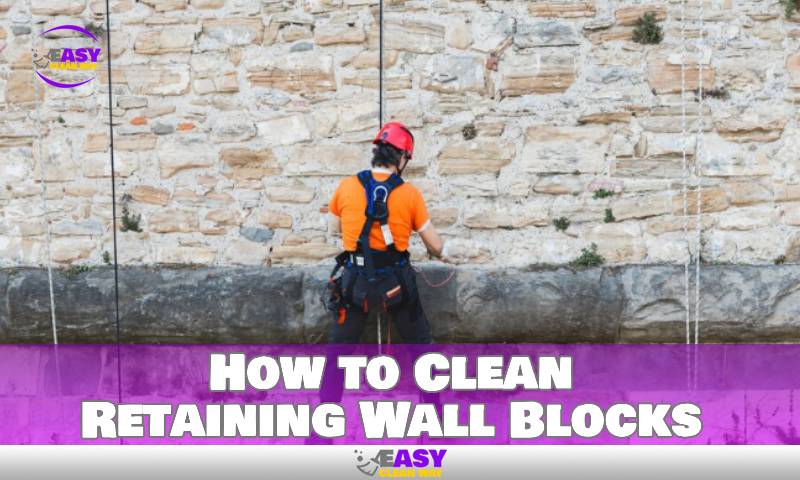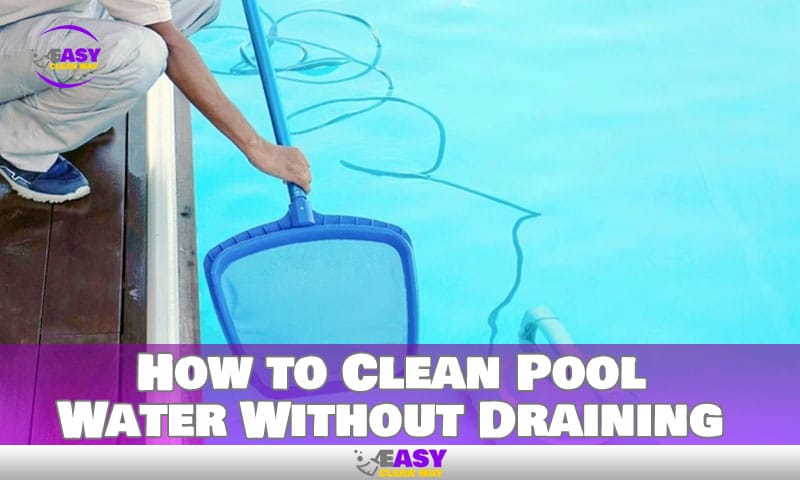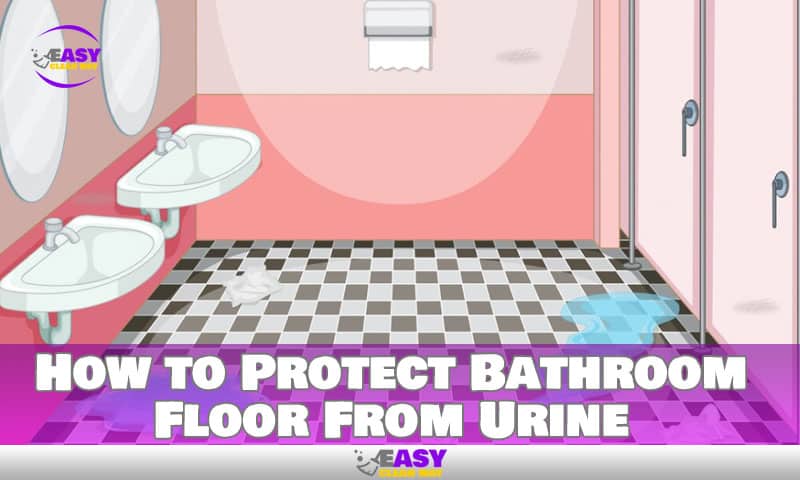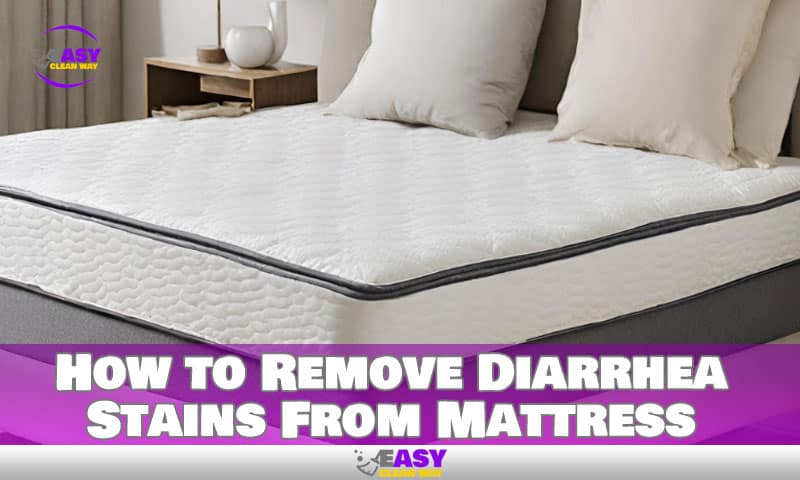To clean retaining wall blocks, start by wiping away any loose debris with a brush or broom, then use a pressure washer on a low setting to remove tough stains or grime.
Understanding Retaining Wall Blocks
Retaining wall blocks serve an essential purpose in landscaping projects by providing support and structure for the soil and preventing erosion. These blocks are typically made from various materials, such as concrete, natural stone, or composite materials. Understanding the types of retaining wall blocks and common issues that arise due to a lack of maintenance is crucial for keeping your retaining wall in top shape.
Let’s explore these points in detail:
Brief Explanation Of What Retaining Wall Blocks Are:
- Retaining wall blocks are heavy materials that are specifically designed to create stable and durable walls.
- These blocks are interlocking and can be stacked together to create a solid barrier for holding back soil on sloped areas.
- They are available in various sizes, shapes, and textures, allowing for endless design possibilities.
- Retaining wall blocks are a popular choice for both residential and commercial landscaping projects due to their strength, versatility, and aesthetic appeal.
Different Types Of Materials Used To Make Retaining Wall Blocks:
- Concrete: Concrete blocks are the most commonly used material for retaining walls. They are strong, durable, and cost-effective. Concrete blocks come in a variety of shapes, colors, and textures, allowing for endless design options.
- Natural stone: Natural stone blocks, such as granite or limestone, add a luxurious and timeless look to retaining walls. They are highly durable and provide a more natural aesthetic appeal, blending well with the surrounding landscape.
- Composite materials: Composite retaining wall blocks are made from a combination of recycled materials, providing an eco-friendly option. These blocks are lightweight, easy to install, and often mimic the appearance of natural stone or wood.
Common Issues That Arise Due To Lack Of Maintenance:
- Weeds and vegetation growth: Without proper maintenance, retaining walls can become breeding grounds for weeds and other unwanted vegetation. The gaps between the blocks can provide ideal conditions for weed growth, compromising the integrity and appearance of the wall.
- Soil erosion: If not maintained regularly, retaining walls can fail to perform their intended function of holding back soil. This can lead to soil erosion, potentially causing damage to the surrounding landscape and structures.
- Block deterioration and damage: Over time, retaining wall blocks can deteriorate due to exposure to weather elements and other external factors. Cracks, chips, or structural damage can compromise the stability and appearance of the wall.
- Drainage issues: A poor drainage system behind the retaining wall can lead to water accumulation, increasing pressure on the blocks and potentially causing damage over time.
Remember, regular maintenance is key to ensuring the longevity and effectiveness of your retaining wall. By understanding the basics of retaining wall blocks and addressing common issues promptly, you can keep your retaining wall in optimal condition for years to come.
Preparing For Cleaning

Before you begin cleaning your retaining wall blocks, it’s important to gather all the necessary tools and equipment to ensure a smooth and efficient cleaning process. Here are some tools you’ll need:
- Stiff-bristle brush or a power washer: This will help remove dirt, grime, and any stains from the surface of the retaining wall blocks.
- Bucket: You’ll need a bucket to mix your cleaning solution.
- Cleaning solution: Depending on the type and condition of your retaining wall blocks, you can use a mild detergent, a commercial cleaner, or a mixture of vinegar and water.
- Safety goggles: It’s essential to protect your eyes from any cleaning solution splashes or debris during the cleaning process.
- Rubber gloves: To protect your hands from chemicals or abrasive cleaning solutions, it’s advisable to wear rubber gloves.
Ensuring safety precautions are in place:
As with any cleaning project, safety should always be a priority. Here are some safety precautions to consider before you start cleaning your retaining wall blocks:
- Wear appropriate clothing: Choose clothing that covers your body to protect your skin from any splashes or potential injuries.
- Clear the area: Remove any obstacles or objects near the retaining wall to create a safe and unobstructed working area.
- Protect nearby plants and surfaces: If there are any nearby plants or surfaces that you don’t want to be damaged by cleaning solutions or debris, cover them with a tarp or plastic sheet.
- Wet the area: Before you start cleaning, wet the surface of the retaining wall blocks. This will help prevent the cleaning solution from drying too quickly and allow it to penetrate and loosen dirt more effectively.
Assessing the condition of the retaining wall blocks:
It is essential to evaluate the condition of your retaining wall blocks before you begin the cleaning process. This assessment will help determine the appropriate cleaning method to use and identify any necessary repairs. Here are some key points to consider:
- Look for cracks or damage: Check for any cracks or visible damage to the retaining wall blocks. If you notice any significant cracks or structural issues, it may be necessary to consult a professional for repairs.
- Identify stains or discoloration: Take note of any stains or discoloration on the retaining wall blocks. Different stains may require different cleaning solutions or techniques to effectively remove them.
- Assess the overall cleanliness: Determine the level of dirt, grime, or algae buildup on the retaining wall blocks. This will help gauge the intensity of cleaning required and whether manual scrubbing or a power washer is necessary.
By following these steps and gathering the necessary tools and equipment, ensuring safety precautions, and assessing the condition of the retaining wall blocks, you’ll be well-prepared to start the cleaning process and restore the beauty of your retaining wall.
Cleaning Techniques For Retaining Wall Blocks
Maintaining the cleanliness of your retaining wall blocks not only enhances the appearance of your outdoor space but also helps prolong the lifespan of the structure. With regular cleaning, you can remove dirt, stains, and moss to keep your retaining wall blocks in top condition.
Step-By-Step Instructions For Pressure Washing The Blocks
Pressure washing is a powerful method for deep cleaning retaining wall blocks. Follow these step-by-step instructions to ensure a thorough cleaning process:
- Setting up the pressure washer: Before you begin, assemble and connect the pressure washer according to the manufacturer’s instructions. Ensure that you have a reliable power source nearby and enough hose length to reach the retaining wall blocks.
- Choosing the right nozzle and pressure settings: Select a wide-angle nozzle, such as a 25-degree nozzle, to avoid damaging the blocks. Adjust the pressure settings to a moderate level that effectively removes dirt and debris without causing any harm.
- Proper technique for cleaning the blocks: Start by spraying water on a small, inconspicuous area to test the pressure and ensure it does not cause any damage. Then, work your way from the top to the bottom of the retaining wall blocks, using sweeping motions to clean the entire surface.
- Safety considerations while using a pressure washer: Always wear protective gear, such as goggles and gloves, to shield yourself from any debris or splashing water. Maintain a safe distance from the pressure washer nozzle and avoid spraying directly at the joints between the blocks to prevent dislodging.
Alternative Methods For Cleaning Without A Pressure Washer
If you do not have access to a pressure washer or prefer alternative cleaning methods, here are two effective techniques you can use:
- Using a brush and detergent solution: Dilute a mild detergent in water and apply it to the retaining wall blocks using a scrub brush. Scrub the blocks in circular motions, paying extra attention to areas with stubborn stains or moss. Rinse the blocks thoroughly with clean water afterward.
- Scrubbing away dirt and stains manually: For smaller areas or localized stains, manual scrubbing with a stiff-bristle brush can be effective. Wet the area with water, apply a cleaning solution if necessary, and scrub vigorously to remove dirt, stains, or moss. Rinse the area well to ensure no residue remains.
Tips For Effective Hand Cleaning
To make the most of manual cleaning efforts, follow these tips for effective hand cleaning of retaining wall blocks:
- Start with a small area to ensure the cleaning solution and technique are suitable before proceeding to larger sections.
- Use a sturdy brush with firm bristles to effectively scrub away dirt and stains.
- Apply moderate pressure while scrubbing to avoid damaging the surface of the blocks.
- Rinse the blocks thoroughly after cleaning to remove any cleaning solution residue.
- Consider using protective gloves to protect your hands while scrubbing.
By following these cleaning techniques, you can keep your retaining wall blocks looking fresh and clean, contributing to the overall aesthetic appeal of your outdoor space. Regular cleaning not only maintains the beauty of your retaining wall but also preserves its integrity for years to come.
Removing Stains And Mold
Maintaining the cleanliness of your retaining wall blocks is essential to not only keep them looking their best but also to ensure their longevity. Mold and stains are two typical problems that many homeowners encounter. In this section, we’ll discuss effective methods for removing stains and mold from retaining wall blocks.
Removing Grease And Oil Stains
Grease and oil stains are often a nuisance, but with the right approach, you can eliminate them effectively. Here are some steps to help you tackle those stubborn grease and oil stains:
- Start by blotting the affected area with a clean cloth or paper towel to absorb as much of the grease or oil as possible.
- Sprinkle a generous amount of baking soda or cornstarch over the stain, allowing it to sit for a few minutes to absorb the remaining residue.
- Use a stiff-bristled brush or sponge to scrub the stained area gently, working the baking soda or cornstarch into the concrete surface.
- Rinse the area thoroughly with water, ensuring all the residue is removed. You can use a hose with a high-pressure nozzle for better results.
- If the stain persists, you can try using a commercial degreaser specially formulated for removing grease and oil stains. Follow the product instructions carefully and rinse the area thoroughly after application.
Remember, the faster you act when grease or oil stains occur, the easier they are to remove. So, be sure to address these stains promptly to prevent them from becoming more challenging to eliminate.
Dealing With Rust Stains
Rust stains can be quite stubborn, but there are effective methods to tackle them. Here’s what you can do to remove rust stains from your retaining wall blocks:
- Before applying any cleaning solution, remove any loose rust using a wire brush or scraper. Be gentle to avoid damaging the surface of the blocks.
- Create a mixture of equal parts lemon juice (or vinegar) and water in a spray bottle.
- Spray the solution generously onto the rust stain and allow it to sit for 10-15 minutes.
- Scrub the stained area using a stiff brush or sponge, applying sufficient pressure to lift the rust.
- Rinse the area thoroughly with water, eliminating any residue.
- If the rust stain persists, you can purchase a commercial rust remover from your local hardware store. Follow the product instructions, as these may vary depending on the brand.
By addressing rust stains promptly and using the right cleaning techniques, you can restore the appearance of your retaining wall blocks effectively.
Eliminating Mold And Mildew Growth
Mold and mildew growth on retaining wall blocks can not only be unsightly but can also pose health risks. To remove mold and mildew effectively, consider the following steps:
- Prepare a solution of one part bleach to three parts water in a bucket.
- Put on protective gloves and eyewear to ensure your safety during the cleaning process.
- Dip a stiff-bristled brush into the bleach solution and scrub the mold-infested areas thoroughly.
- Allow the solution to sit on the surface for about 10-15 minutes to kill any remaining mold spores.
- Rinse the area thoroughly with water, ensuring complete removal of the bleach solution.
- Repeat the process if any mold traces remain, using clean water and the bleach solution as necessary.
Remember, mold and mildew thrive in moist environments, so it’s crucial to identify and address any underlying moisture issues to prevent future growth.
Tips For Preventing Future Mold Issues
Prevention is always better than cure, especially when it comes to mold and mildew. Here are some tips to help you avoid future mold problems on your retaining wall blocks:
- Ensure proper drainage around your retaining wall to prevent water accumulation and excessive moisture.
- Regularly inspect your retaining wall for any signs of mold or mildew growth. Promptly address any issues to prevent them from spreading.
- Clean your retaining wall blocks at least once a year to remove dirt, debris, and any potential mold spores.
- Avoid overwatering plants or placing sprinkler systems too close to the retaining wall to minimize excess moisture.
- Consider applying a mold-resistant sealant to your retaining wall blocks to create a barrier against mold and mildew growth.
By following these preventive measures, you can maintain a cleaner and mold-free retaining wall, ensuring its durability and aesthetic appeal.
Remember, regular maintenance and timely removal of stains and mold are crucial for preserving the beauty and functionality of your retaining wall blocks. With these tips in mind, you’ll be well-equipped to handle any stain or mold issue that comes your way.
Preventative Maintenance Tips

Taking preventative measures can help extend the lifespan and aesthetic appeal of your retaining wall blocks. By implementing a regular maintenance routine and addressing potential issues proactively, you can ensure that your retaining wall blocks remain clean and in good condition.
Here are some key tips to consider:
Regular inspection and maintenance routine:
- Conduct periodic inspections of your retaining wall blocks to identify any signs of dirt, stains, or damage.
- Remove any debris or organic matter, such as leaves or moss, that may accumulate on the blocks.
- Check for any cracks or loose blocks that need immediate attention.
- By performing regular maintenance, you can prevent the build-up of stubborn stains or further deterioration.
Installing drainage solutions to prevent water buildup:
- Improper drainage can contribute to the accumulation of dirt, mildew, and algae on retaining wall blocks.
- Install drainage systems, such as weep holes or french drains, to ensure that water flows away from the wall.
- This helps prevent water from seeping into the blocks and causing damage or unsightly stains.
- A well-designed drainage system can significantly reduce the maintenance required to keep your retaining wall blocks clean.
Applying sealant or protective coatings:
- Applying a sealant or protective coating to your retaining wall blocks can help repel dirt, stains, and moisture.
- Choose a product specifically formulated for retaining wall blocks and follow the manufacturer’s instructions for application.
- Sealants can provide an extra layer of protection against the elements and make it easier to remove any accumulated dirt or stains.
- Regularly inspect the sealant and reapply as necessary to ensure continued protection.
Keeping surrounding areas clean and clear:
- Clear any vegetation or debris from the area surrounding your retaining wall blocks.
- Trim plants or trees that may cause excessive shade, as this can promote the growth of moss or algae.
- Regularly sweep or hose down the area to remove any loose dirt or dust.
- By keeping the surrounding areas clean, you can prevent dirt and debris from accumulating on the retaining wall blocks.
By following these preventative maintenance tips, you can keep your retaining wall blocks looking clean and well-maintained for longer periods of time. Regular inspections, proper drainage, the application of sealants, and a clean surrounding environment all play a crucial role in maintaining the longevity and aesthetics of your retaining wall blocks.
FAQ
How Do You Clean Retaining Wall Blocks?
To clean retaining wall blocks, start by removing debris, scrubbing with a solution of water and mild detergent, and rinsing thoroughly.
Can You Use Bleach To Clean Retaining Wall Blocks?
Yes, bleach can be used to clean retaining wall blocks. Mix 1 part bleach with 10 parts water and scrub the blocks, then rinse thoroughly.
What Is The Best Way To Remove Stains From Retaining Wall Blocks?
For stain removal on retaining wall blocks, apply a mixture of water and vinegar with a brush, let it sit for a few minutes, then scrub and rinse.
Can Pressure Washing Damage Retaining Wall Blocks?
Yes, pressure washing can damage retaining wall blocks if used at too high a pressure or held too close. Use low pressure and a wide spray pattern to avoid damage.
Conclusion
Maintaining a clean retaining wall is not only aesthetically pleasing but also crucial for its longevity. By following the simple steps outlined in this blog post, you can ensure that your retaining wall remains in pristine condition for years to come.
Begin by removing any debris or vegetation from the surface using a stiff brush or pressure washer. Then, treat any stains or discoloration with a mild detergent or specialized cleaner. For tougher stains, consider using a mixture of baking soda and water or a commercial concrete cleaner.
Remember to rinse thoroughly to remove any residue. In addition, regular maintenance, such as inspecting for cracks and repairing them promptly, will help prevent further deterioration. By incorporating these cleaning practices into your routine, you can enjoy a beautiful, well-maintained retaining wall that enhances the overall appeal of your outdoor space.
Hey there! I’m Wilfred Holguin, your Home Clean Expert blogger. I’m on a quest to help you conquer the clutter in your home and embrace the joys of a tidy home.





